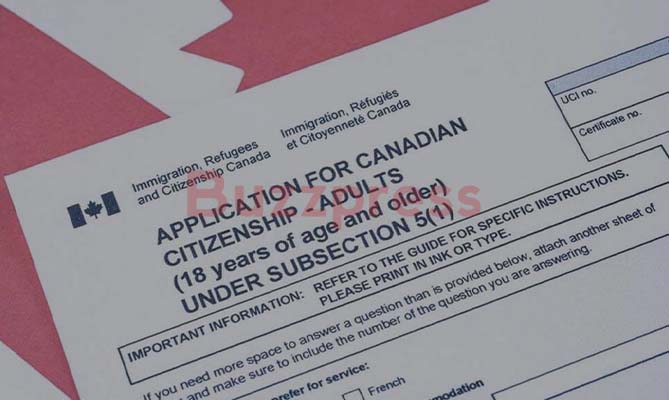How many people immigrate to Canada?

Immigration has been a source of demographic, economic, and cultural development in Canada for over a century. Thousands of eligible citizens from all over the world have chosen to live in Canada and call it home. Newcomers to Canada have been a significant source of continuing development and prosperity, whether pursuing better economic prospects, reuniting with family members, or seeking protection as resettled refugees or other protected persons.
Many people come to Canada to stay temporarily, whether as a tourist, an international student, or a temporary foreign worker, in addition to those who move to Canada permanently. Regardless of how they arrived in Canada, they all contribute to the country’s economy, the prosperity and development of different sectors, and the diversity and multiculturalism of the country.
Immigration has aided in the development of the nation that the world now sees – a dynamic society with solid economic and social pillars and the potential for sustained growth and prosperity.
Canada’s demographic and economic growth was aided by immigration:
Immigration will continue to be a key factor in the advancement of Canada’s economy, especially in light of low birth rates and the importance of increasing the working-age population, and it will do so in the future. By the early 2030s, it is projected that immigration will be the sole source of population growth in Canada. It’s also worth noting that many of Canada’s immigration source countries face similar demographic problems as a result of aging demographics and lower birth rates. the second footnote, As a result, Canada must be ready to compete for young, qualified, and mobile jobs on a global scale.
🇨🇦 🇨🇦الهجرة إلى كندا 2022 مرحبا بكم في كندا
في كل عام ، يأتي أكثر من 50000 أجنبي للعمل في كندا ✅
تقدم للهجرة إلى كندا من خلال ملء استمارة التسجيل عبر الموقع الرسمي ✅
تمنح الشركة تأشيرة + تذاكر للسفر إلى المؤهلين (تأكد من التحقق مما إذا كنت مؤهلاً) ✅
الهجرة إلى كندا 2022 ✅

Immigrants and refugees help to advance Canadian culture in the following ways:
The diverse cultures, religions, histories, and languages of English, French, and Indigenous Peoples have shaped Canada’s identity since its founding in 1867. Immigration has also contributed to Canada’s history of bringing disparate cultures together to live in a single national culture. Immigrants to Canada come from a number of countries and have diverse cultural and religious backgrounds, but they are able to successfully integrate into communities throughout the world. In 2016, African immigration outnumbered European immigration, and the trend persisted in 2019. Each new wave of immigration adds to Canada’s increasing cultural, linguistic, and religious diversity. In exchange, Canadians have traditionally viewed immigrants as highly educated, ambitious, and competent individuals who have the ability to positively contribute to Canadian society.
Canada is in the midst of a managed, phased increase in immigration that will see more than one million immigrants accepted over the course of three years in 2019, 2020, and 2021. Since taking power in 2015, the Liberal government has defined 300,000 immigrants per year as the “new standard.” Previously, annual immigration figures ranged from 250,000 to 270,000 people.
Every year, how many economic immigrants come to Canada?
Economic immigrants are the backbone of Canada’s immigration policy. Federal professional immigrants, as well as company immigrants, PNP immigrants, and Quebec immigrants, are all included in this group. In 2019, 191,600 economic immigrants are expected to arrive in Canada, followed by 195,800 in 2020 and 202,300 in 2021.
How many immigrants from the family class arrive in Canada each year?
The second-largest group of immigrants is from the family community, after economic immigrants. Spouses, partners, children, parents, and grandparents are all included under Canada’s family reunification sponsorship immigration policy. Although there will be changes in this category over the next three years, they will be smaller than the increases in economic immigration. In 2019, Canada expects to accept 88,500 immigrants from the family class, followed by 91,000 in 2019 and 91,000 in 2020.
How many refugees and people in need of protection arrive in Canada each year?
Every year, Canada accepts different types of refugees and protected persons. It’s also known for how it handles foreign conflicts, as shown by its recent reception of Syrians and Yazidis from Iraq. The way Canada’s private sponsorship refugee program accepts and helps displaced people has been praised all over the world. Refugees and protected persons are expected to increase in number over the next three years, much like the other groups. In 2019, 46,450 people are projected to join the group, followed by 49,700 in 2020 and 51,700 in 2021.
Each Year, How Many Humanitarian Immigrants Arrive in Canada?
One more group has been added to Canada’s immigration levels plan: ‘Humanitarian & Other.’ This is for those who don’t fit into any of the other groups. Candidates in this group are accepted at the federal government’s discretion. The goal for 2018 was 3500, 4250 for 2019, and 4500 for 2020.




